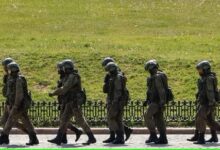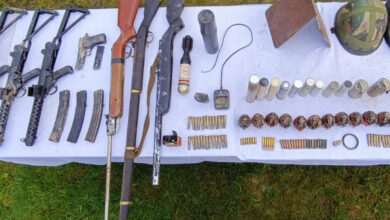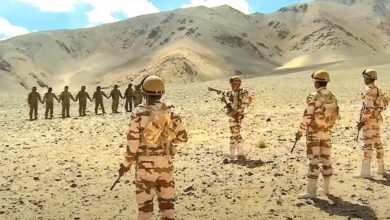Men Of Steel, A Book About Military Leadership, Is Published By Indian Army Chief General Manoj Pande

- It placed a focus on developing effective leaders who meet the highest standards and requirements for skills necessary to deal with the rigours of modern wartime situations. These leaders must also be steadfast and visionary.
- Men of Steel is a timely read to comprehend how the military must develop effective leaders who are prepared for the future. It draws lessons from the past to offer insights and recommendations to improve efficacy through a variety of lessons learned from experience, anecdotes, and cutting-edge technological innovations.
On Tuesday, Men of Steel, a book about military leadership by the head of the Indian Army, was published.
According to a press release, the book “Men of Steel” is a compilation of essays that evaluate military leadership and offer categorical suggestions to maintain the military’s efficacy and culture.
It is thorough and provides insightful information on several facets of this special topic.
Within the scope of the challenges of 21st-century warfare, all authors have comprehensively contextualised the role of military leaders across 15 chapters, covering the subtleties of leadership at the strategic, operational, and tactical levels. This provides additional policy recommendations to make the organisation more dynamic and effective.
Men of Steel envisions an organised way to having directing leadership, excellent and visionary leaders, and subordinates in the armed services to achieve the highest standards of abilities necessary to deal with the difficulties of contemporary conflict, as the title suggests.
The book, it is claimed, “brings to the fore high values and viewpoints on crucial strategic and operational elements where military leaders must play a significant role in determining the security and future of the nation.” These hypotheses confirm that in order to maximise the performance and combat readiness of the armed forces, strategic leaders must have a long-term vision for fostering an atmosphere of trust and ownership.
As the guardians of the country’s security and welfare, the Indian Armed Forces have gained the trust of the nation through their professionalism, dedication, sacrifice, and courage. They now have to adjust and adapt to the quick advancements in technology, combat, and the complexity of threats.
It has been suggested that the focus of leadership education in the academies be changed in order to maintain our superiority in the face of these difficulties and to develop the most qualified, capable, and committed leaders who would lead our armed forces into the future, maintaining the competitive edge that the organisation requires.
However, building trust is still essential to motivating the team, and this responsibility solely falls on the shoulders of the leader. The organisation needs to evolve, learn, and foster innovation while looking into opportunities that support the growth of leadership.
These two ideas complement one another. It has been noted that India must prioritise thorough intelligence gathering while addressing some of the greatest strategic and territorial threats. To do this, India must pay critical attention to institutional and organisational weaknesses and provide a dynamic approach to creating capable leaders.
By using these steps, you’ll be able to make decisions more quickly while dealing with novel scenarios. For any organisation to succeed, a great leader must create and support strong teams. selecting people based on more than just their talents, such as their attitude, shared values, capacity for learning, and capacity to fit in with the organisational culture.
They must work together to provide solid foundations, therefore leadership must be the “core business.” Through mentoring from a capable leader, one might learn about or simplify the subject of leadership.
The book continues by stating that cooperation between all governmental and military institutions is essential for effective operation at a time when the Indian Military is on the verge of transformation in a complex and uncertain security environment. Therefore, the foundation of military effectiveness continues to be an efficient advertising methodology.
In conclusion, the book examines the difficulties and complexities faced by the armed forces and makes reform suggestions to ensure that the military is fit for the future and capable of coping with a quickly evolving and fast-paced global security environment.
It placed a focus on developing effective leaders who meet the highest standards and requirements for skills necessary to deal with the rigours of modern wartime situations. These leaders must also be steadfast and visionary.
Men of Steel is a timely read to comprehend how the military must develop effective leaders who are prepared for the future. It draws lessons from the past to offer insights and recommendations to improve efficacy through a variety of lessons learned from experience, anecdotes, and cutting-edge technological innovations. The book serves as a resource for a deeper understanding of military leadership through the writers’ selection of gripping pieces.







Facebook Comments